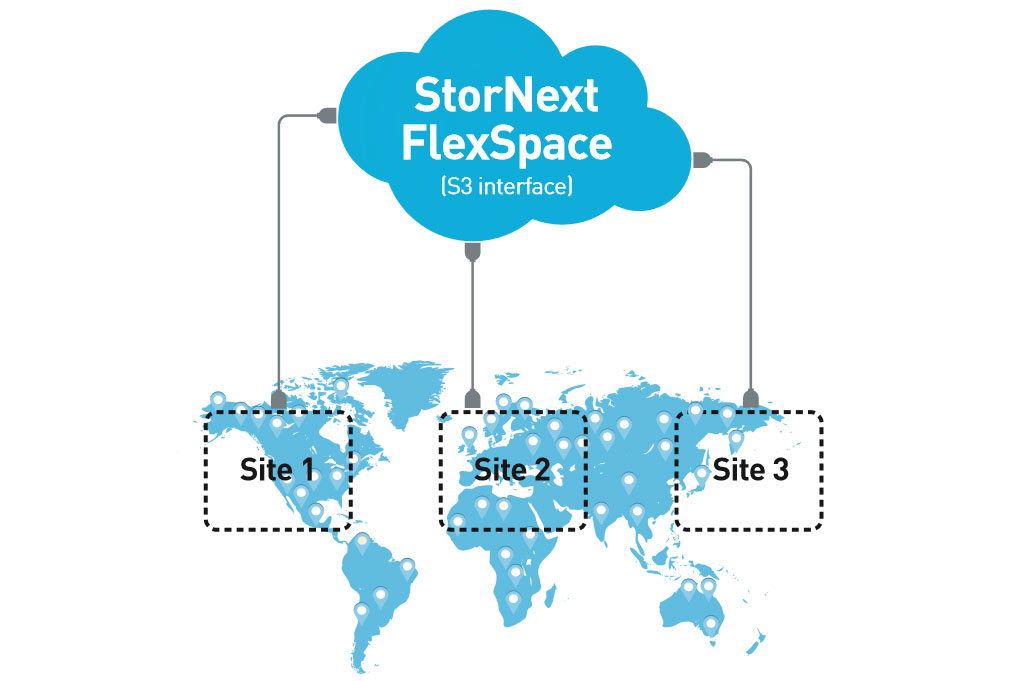Latest Version of File System Will Include New Sync Features, Shared Archives
Quantum notched up its storage platform today, releasing new workflow optimizations and data-management advances as part of StorNext 6.
The upgrade includes FlexSync, an automated system for content synchronization between multiple StorNext systems, and FlexSpace, an archive repository that can be shared among teams distributed around the world. FlexSpace uses FlexTier, introduced in StorNext 5.4, for automating public and private cloud access.
“StorNext 6 is all about new workflow opportunities for our customers,” Quantum Senior Director of Media and Entertainment Dave Frederick told StudioDaily. “But it’s a stable environment. Applications in the StorNext ecosystem take advantage of all the functionality of StorNext 6 without having to be modified. Apps do not have to requalify for 6, but we’ve added a number of new features that are really significant in the workflow.”
FlexSync Monitors Metadata for File Changes
FlexSync allows users to synchronize two StorNext systems for replication or data protection, among other possible applications. Frederick said FlexSync monitors the file system metadata, looking for changes to files and making sure they are reflected on a sync’d system as quickly as possible. “We upleveled the monitoring of the system from the files to the metadata, which allows us to do more faster,” he explained. “It creates a model where the file system doesn’t have to be fully locked in order to understand what’s changed. The process used to take hours, if not days. FlexSync gets it down to seconds.”
FlexSpace Creates Shared Archives for Multiple Sites
FlexSpace, meanwhile, helps users create an archive of media that can be shared among multiple locations, using FlexTier as a gateway. Frederick cited the hypothetical example of a company with multiple offices including Los Angeles and London. “If London does a program about Brexit and Los Angeles wants to pull some of that content, they could go to the shared archive and pull it down on a file-by-file basis,” he said. “They know what’s there because of stubs pointing to remotely archived content. So Site A archives a file. StorNext creates metadata to tell other sites subscribing to that shared archive that a new file exists. They see the stubs, but we don’t transfer any content until they actually ask for it. So it becomes a shared pool of content in a private or public cloud.”
Also new in StorNext 6 is the ability to manage bandwidth on a client-by-client basis. That can be useful when you know a given client will need a certain amount of bandwidth available to handle a mission-critical task. Say you need to guarantee bandwidth for a review session with a DP looking at uncompressed footage, or limit the bandwidth allocated to clients working on more routine procedures.
Other features include file-system auditing for users who need to create audit reports for security or other reasons; the ability to manage and balance data across stripe groups as a nondestructive background process without taking users offline; a new system for controlling the display of offline archives in the Mac Finder; and an increase in the capacity of managed file systems from 1.4 billion to 2 billion files.
Coming This Summer
StorNext 6 will be standard on new Xcellis, StorNext M-Series, and Artico archive products early this summer, Quantum said. Current users under current support contracts will be upgraded to StorNext 6 at no additional cost.
Quantum: quantum.com
